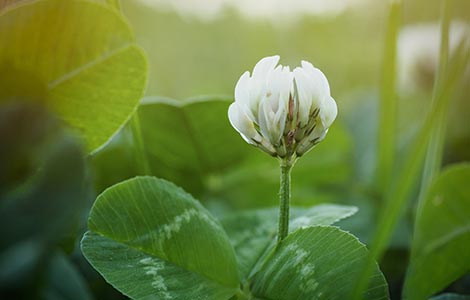
- Boron is a micronutrient required for all plant nutrition.
- While it has been generally accepted that boron is phloem-immobile in plants, recent research has shown that boron is mobile in the phloem tissue in a number of species.
- Diagnosis of boron deficiencies and the most efficient methods of boron application differ in plant species with respect to boron mobility or immobility.
- Knowledge of the relative mobility of boron within a particular plant species will improve the ability to diagnose boron deficiencies and supply the needed boron for optimum crop production.
Boron (B) is required for all plant growth. It is essential that boron is available for new vegetative growth and reproductive development. Therefore, boron must remain available for plant uptake during the entire growth period unless it can be translocated from older to new tissues in the plant.
Plant uptake of boron is a passive (non-metabolic) process and boron is transported in the xylem vessels (transpiration stream) of all plant species. Therefore, boron is mobile in the xylem system of all plants. It has been generally accepted that it is an immobile nutrient in the phloem tissue of plants. Once incorporated into a given tissue (such as leaves), boron can not be remobilized to supply the needs of other plant tissues. However, results of recent research by Dr. Patrick Brown and associates of the University of California, Davis, have demonstrated that the phloem mobility of boron varies significantly among plant species.
These results show that boron is now known to be mobile in all plant species that use simple sufars (known as polyols) as primary compounds in photosynthetic processes. Boron forms a complex with these polyols and is transported in the phloem tissues to active growing regions in the plant.
In those plant species which do not produce significant quantities of polyols, boron can not re-enter the phloem stream after it has been delivered to leaf tissues in the transpiration stream (xylem tissue). This boron will tend to accumulate in the leaves and B is said to be immobile in these species.
Research results
Evidence of phloem mobility or immobility can also be found by studying the distribution of boron within different tissues of a given species. For example, under field conditions, pistachio and walnut contained the highest boron concentrations in the leaves, and the lowest boron concentrations in fruit and seed. This indicates that the boron from these leaves does not translocate to the fruit and seed. In contrast, almond and apple trees grown in the same field had the highest boron concentrations in the hulls and fruit, respectively, with much lower boron in the leaves. Data in table 1 give boron concentrations in various tissues of the four tree species.
Download PDF for tables
The concentrations of boron in leaves of different ages on the same plant also provides evidence of boron mobility in a species (table 2). Higher boron concentrations in basal (older) than apical (younger) leaves indicates boron immobility in the phloem. In contrast, higher boron concentrations in younger leaves (table 3) indicates boron immobility in the phloem, since younger leaves have transpired less water than the older leaves.
Download PDF for tables
Table 4 summarizes the current knowledge of grouping agronomic and horticultural crops as B-mobile or B-immobile. Agronomic crops and most vegetables are boron-immobile species. However, relatively more species of fruit and nut crops are boron-mobile species. Clearly, there is a need to study all economically important plant species with respect to boron mobility. Such knowledge will improve the grower’s ability to diagnose boron deficiencies and use the most effective methods of applying boron fertilizers for optimum crop yields.
Download PDF for tables
Diagnosis and correction of boron deficiency
Knowledge of boron mobility or immobility in various plant species is important in interpreting plant analysis results. Table 2 shows that boron accumulates in the older leaves of boron-immobile species. Therefore, recently matured or fully expanded leaves should not be sampled to diagnose for deficiency because these leaves may not reflect the boron status of the growing tissues, for which a constant boron supply is critical. Diagnosis of boron deficiency in boron-immobile species can only be done by sampling growing tissues.
In contrast, sampling mature leaves of boron-mobile species to diagnose for boron deficiency is appropriate. The boron content of mature leaves reflects the boron status of the entire plant, including the young, actively growing tissues. In these species, a decrease in boron uptake will not affect the growing tissues until the soluble-boron pool of the mature tissues has been depleted by translocation to the younger tissues.
Correction of boron deficiency is directly affected by boron mobility or immobility in plants. In those species in which boron is immobile, foliar-applied boron will not be translocated from the site of application. This boron cannot supply the boron requirements of tissues not yet formed. Therefore, boron applications must be made directly to developing tissues, such as flower buds and flowers, to ensure an adequate boron supply during their critical time of development.
In contrast, foliar sprays of Solubor® can be applied to boron-mobile plants at any time that functional leaves are present. The applied boron can correct current boron deficiencies and also supply boron to future developing flowers and fruit tissues. Benefits of foliar boron applications in fruit set have been observed in boron-mobile tree species such as almond, apple, plum, and prune.
Download Agronomy Notes